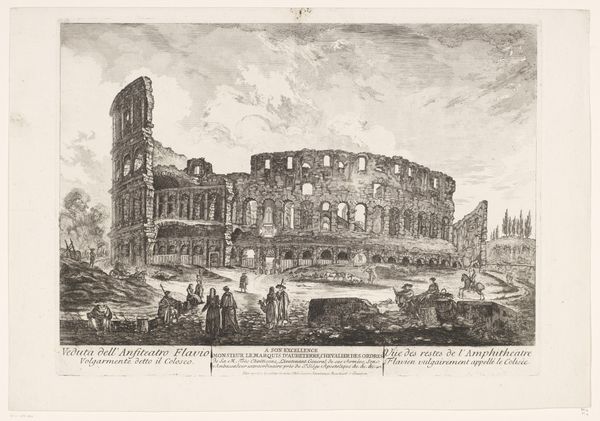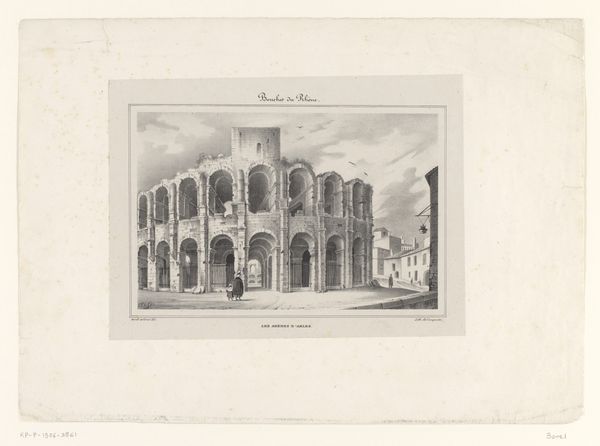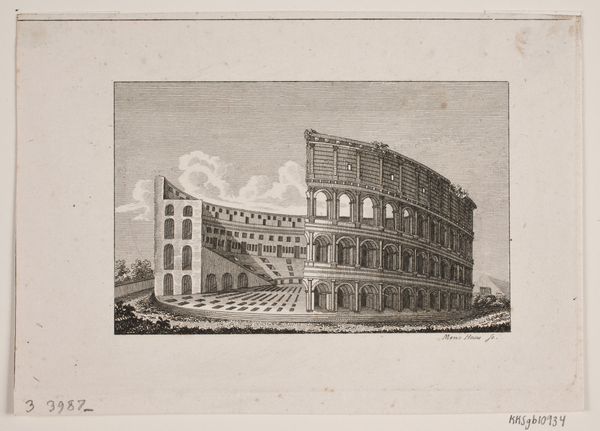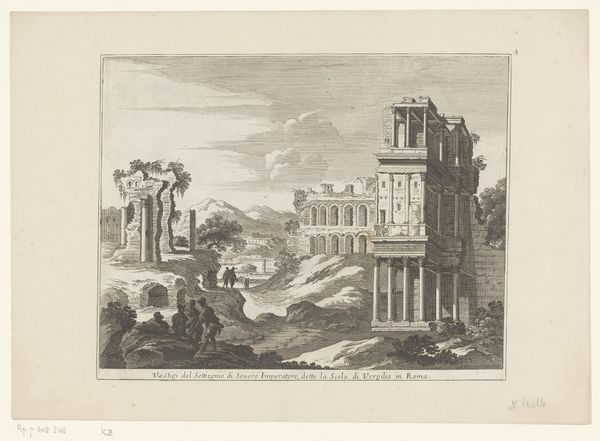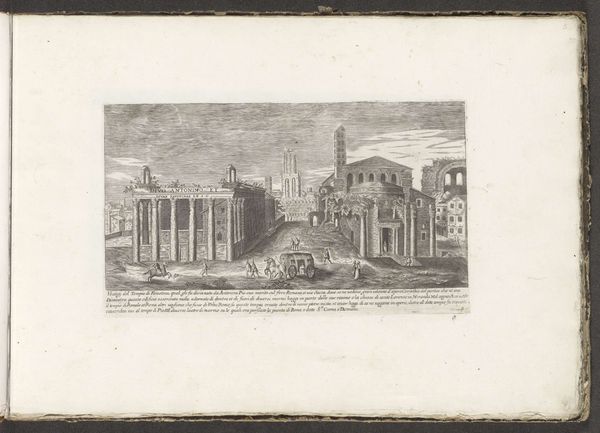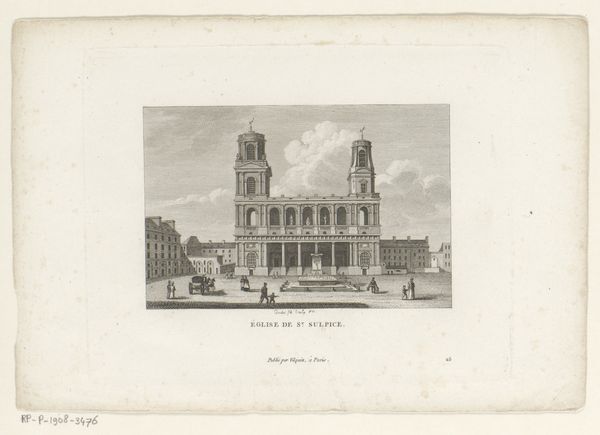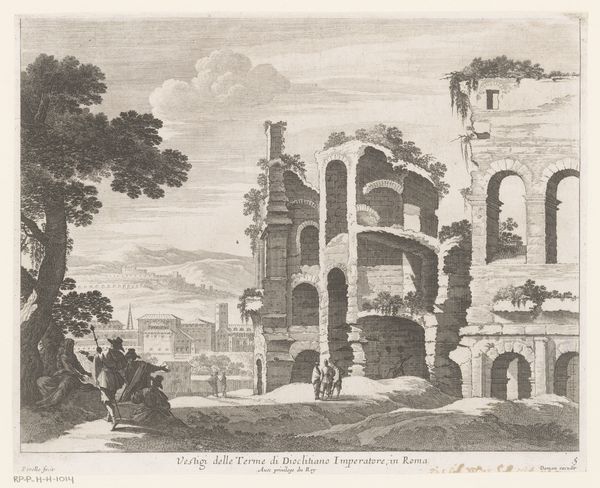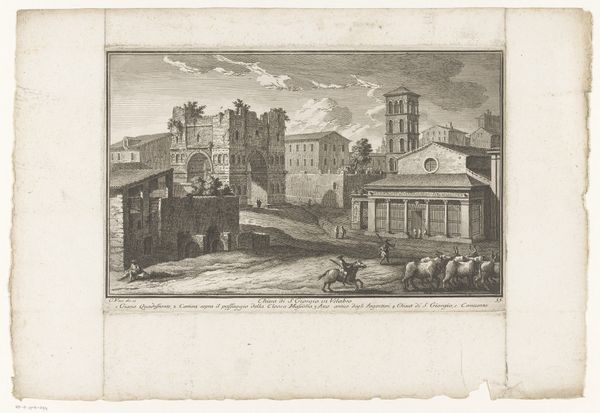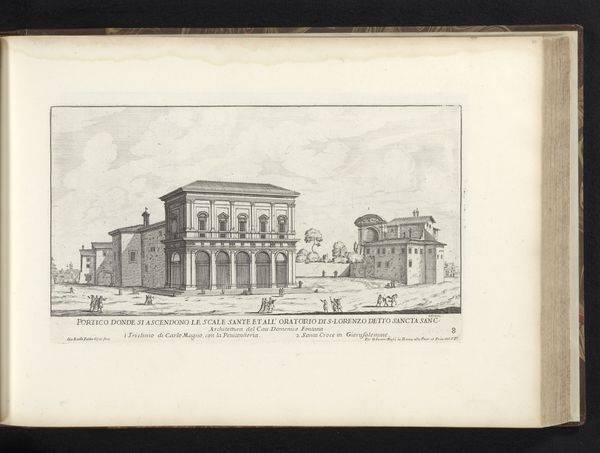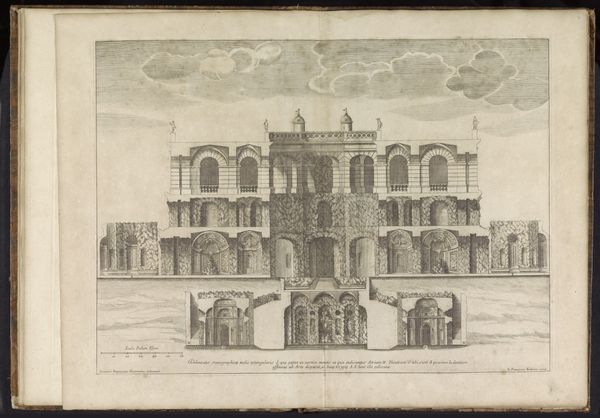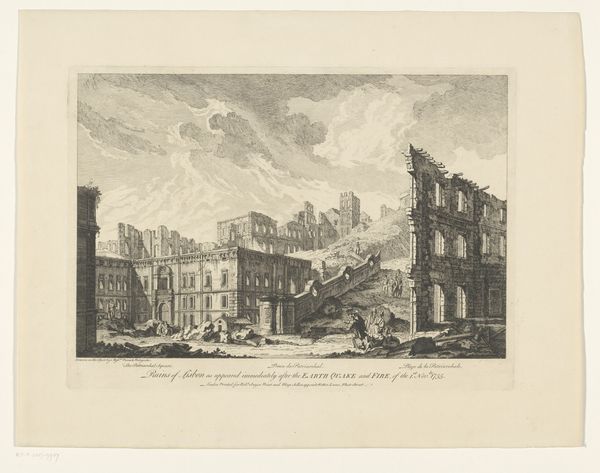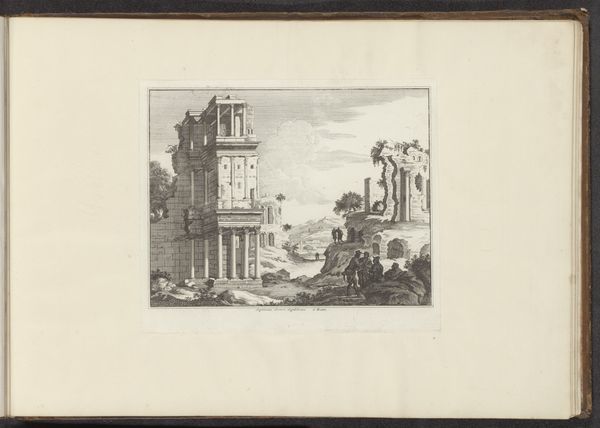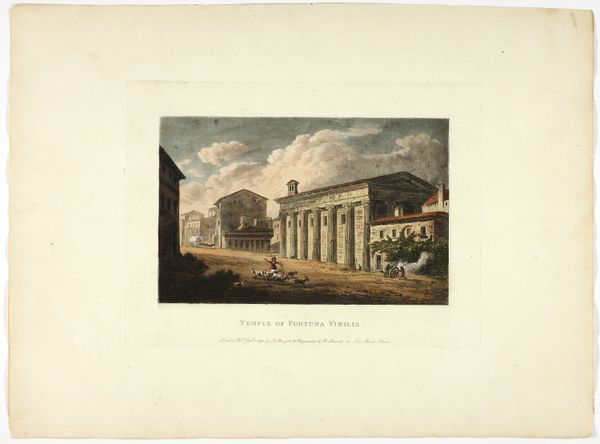
The Coliseum, plate fifteen from the Ruins of Rome Possibly 1796 - 1798
0:00
0:00
drawing, print, paper, watercolor
#
drawing
#
neoclacissism
#
water colours
# print
#
paper
#
watercolor
#
coloured pencil
#
cityscape
Dimensions: 330 × 448 mm (sheet)
Copyright: Public Domain
Editor: Here we have "The Coliseum, plate fifteen from the Ruins of Rome" by M. Dubourg, possibly created between 1796 and 1798. It’s a print combining watercolor and coloured pencil on paper. I'm struck by how the artist uses watercolor to convey a sense of decay. How do you interpret this work, especially concerning its materiality? Curator: I see the work through the lens of its production. This isn’t just a romantic ruin; it’s a commercial product. Dubourg is creating a print, which means a repeatable image, intended for a market. The use of watercolor and pencil suggests a concern for aesthetic appeal, yes, but also speed and reproducibility. Think about the labor involved in creating multiple versions of this image. Who was consuming these prints, and what did the image of Roman decay signify to them? Editor: So you're saying that it’s not only a ruin of a building, but in some ways a product intended to be consumed and reflect an idea? Curator: Precisely. Neoclassicism, as an art movement, was intertwined with emerging capitalism. Mass production of art became increasingly commonplace, leading to a broader accessibility of prints such as these. Notice the subtle hand coloring? It hints at a kind of 'craft' value layered over a mechanical process. How does this tension – between handmade and mass-produced – inform our understanding of the piece? Editor: That makes me consider the social aspect, who purchased the artwork and why. I think understanding the consumption connects more to our present day. What did the Roman ruins mean to the purchasers in the late 1700's? Curator: Consider the print within the broader context of European expansion and the appropriation of classical ideals. This image would be readily bought in bulk and the rise of the middle class! These ruins become trophies for armchair travelers, accessible commodities, not grand art. Editor: Thank you, that shifted my perspective to how the production process itself informs our understanding and how it relates to cultural context! Curator: It’s about recognizing the labor, the materials, and the social dynamics intertwined in its making. Thinking this way helps unlock the multiple layers of meaning in what at first might seem a pretty view.
Comments
No comments
Be the first to comment and join the conversation on the ultimate creative platform.
